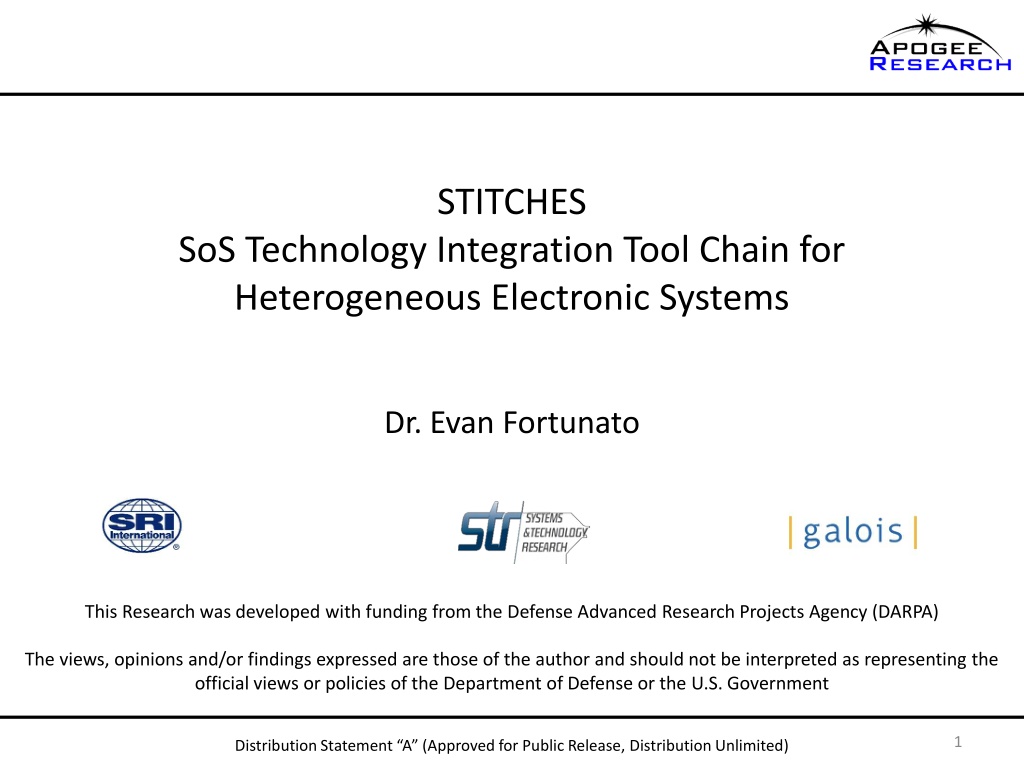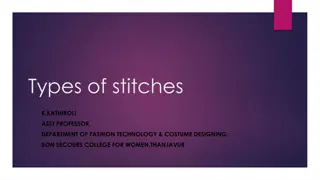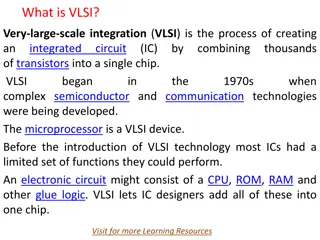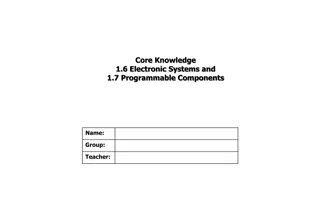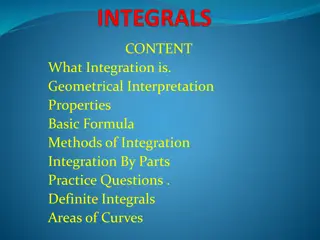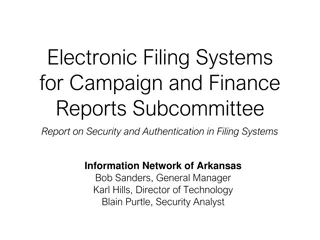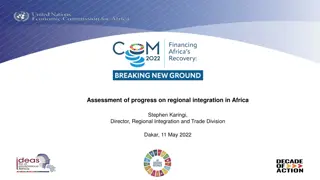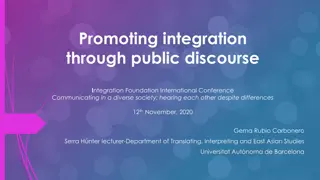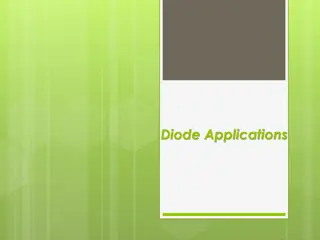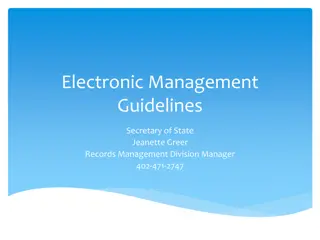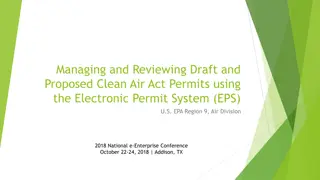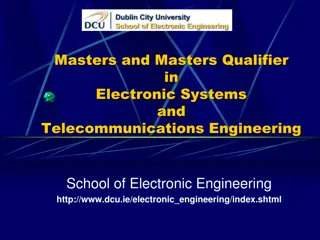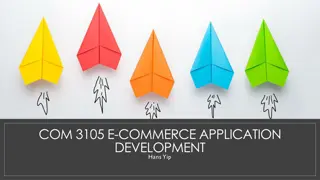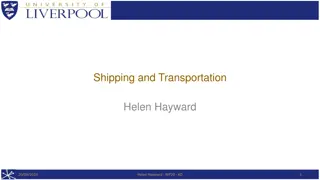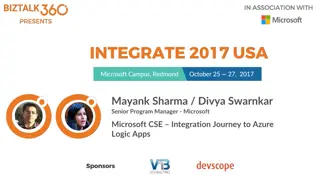Revolutionizing Electronic Systems Integration with STITCHES Technology
This research, funded by DARPA, introduces the STITCHES technology integration tool chain for heterogeneous electronic systems. It addresses the challenge of evolving system architectures to keep up with advancing technologies. The goal is to compose systems that can adapt efficiently without requiring a common interface for global interoperability. By understanding the trade-offs between local and global message standards, the STITCHES approach offers a flexible and efficient solution through Incremental Standards. Key innovation lies in the Field and Transform Graph (FTG) concept, enabling local definition of node information without global coordination.
Download Presentation

Please find below an Image/Link to download the presentation.
The content on the website is provided AS IS for your information and personal use only. It may not be sold, licensed, or shared on other websites without obtaining consent from the author. Download presentation by click this link. If you encounter any issues during the download, it is possible that the publisher has removed the file from their server.
E N D
Presentation Transcript
STITCHES SoS Technology Integration Tool Chain for Heterogeneous Electronic Systems Dr. Evan Fortunato This Research was developed with funding from the Defense Advanced Research Projects Agency (DARPA) The views, opinions and/or findings expressed are those of the author and should not be interpreted as representing the official views or policies of the Department of Defense or the U.S. Government 1 Distribution Statement A (Approved for Public Release, Distribution Unlimited)
The Goal: Composing Systems That Keep Up With The Times DoD has long assumed that homogeneous, fixed-configuration weapon systems are the only way to meet their goals of a superior military force Must last a long time, so requirements are developed for 30+ years out. Meeting 30 year out requirements with today s technology is hard Result is the best design possible with 20-30 year old technology and updates are not efficient with respect to time or cost Open Architectures Try to Solve this Problem Requires enormous effort to reach a global consensus on the system architecture, Even then, it is only a local version of global Global standards have to work for everyone, so aren t optimized for your application Result is heterogeneous components in a homogeneous architecture which doesn t work because the architecture needs to evolve with the technology Attempts to build flexibility into the architecture (to support heterogeneity) just result in overly complex infrastructures that still don t anticipate the new technologies What if Global Interoperability Didn t Require a Common Interface at ALL? 2 Distribution Statement A (Approved for Public Release, Distribution Unlimited)
Understanding the Trade between Local and Global Message Standards Local Message Standards Flexible You Can Add New Messages Easily Inefficient - Require N2 Transforms (all pairs) for Interoperability M# = Message # M2 M3 M1 Transform M2 <- M1: M2 = T21(M1) Transform M5 <- M1: M5 = T51(M1) M4 M5 Global Open Standards Efficient N Transforms to/from the Global Standard Not Flexible Can t change without tremendous effort M2 Transform M2 <- M1: M2 = T2G(TG1(M1)) Transform M5 <- M1: M5 = T5G(TG1(M1)) M3 M1 G M4 M5 Incremental Standards (STITCHES) Efficient ~N Transforms for Interoperability Flexible You Can Add New Messages Easily M2 Transform M2 <- M1: M2 = T21(M1)) Transform M5 <- M1: M5 = T54(T43(T32(T21(M1)))) M3 M1 M4 M5 3 Distribution Statement A (Approved for Public Release, Distribution Unlimited)
Key Innovation: Field and Transform Graph (FTG) Fields are Nodes in the Graph and Contain: A set of subfields (which are defined by other nodes in the graph) A set of properties (mathematically precise specification of node properties) Note: All node information is defined locally, no coordination required! Nodes are Connected by Links That Define the Transform from Source to Destination Nodes Each link requires a pair wise human coordination between the source and destination Transforms Expressed in a Domain Specific Language Built for this Purpose Graph algorithms determine a composition of transforms (path through the FTG) that produce the destination message given a source message No Global Coordination Required to Update or Evolve Data in the FTG 4 Distribution Statement A (Approved for Public Release, Distribution Unlimited)
STITCHES Uses a Domain Specific Language to Capture the Specification Why a Domain Specific Language (DSL)? General Purpose Languages are Hard to Read, Write and Formally Analyze Standard System Engineering Tools Are Limited DSL Provides a Narrow Language That is Tailored To This Problem Assign is the Key STITCHES Capability to Allow Efficient Use of the FTG Assign designates that two instances represent the same thing in the real world STITCHES then finds a path through the FTG to convert between the fields Result is that even if the messages don t match, many of their subfields will Tracker Input Message: Tracker.In Sensor Output Message: Sensor.Out Time:Sensor.Time Dets:Sensor.Detection[ ] DwellTime:Tracker.Time Contacts: Tracker.Detection[ ] XForm XForm(in:Sensor.Out):Tracker.In { DwellTime = Assign(In.Time); Contacts = Assign(in.Dets); } XForm(in:Sensor.Out):Tracker.In { DwellTime = In.Time-18; Contacts = in.Dets*180/3.14159; } Resolve 5 Distribution Statement A (Approved for Public Release, Distribution Unlimited)
What Does STITCHES Produce? Developed by Subsystem Engineers Subsystem Core Subsystem Interface, Developed by SS Engineer with STITCHES Autogenerated Libraries. Developed once per Core Version to Work for all SoS Configurations Interface Generated Glue Code Autogenerated by STITCHES; Tailored to Each SS and SoS Configuration Platform 1 Platform 2 Display Core Radar Core Comms Box Interface Tracker Core Interface Comms Box Interface Interface Shim Interface Shim Transform Shim Shim Shim EM Shim EM EM Transform Serialize MAC Serialize MAC Deserialize MAC Deserialize MAC Deserialize MAC Serialize MAC Transport Transport Transport Transport Transport Transport Local Bus Network 1 Local Bus Network 2 MAC: Message Authentication Code EM: Execution Monitor 6 Distribution Statement A (Approved for Public Release, Distribution Unlimited)
STITCHES is Focused on Implementing a Scalable Approach to Building SoS Capabilities SoS Specification Design Space Exploration Process FTG to Construct Transformation Chains Specify Interface Stack by forming & solving optimization problems Compiler Construct Interface Stack Structure Optimize Transforms for this Instance of the Interface Provide Cyber Security through whitelist property enforcement Generate C++/Java Code & Compile into binaries Community Specifications Field & Transform Graph Automated Design Space Exploration Subsystem Specs (Distributed) SoS Configurations Compile Interfaces Base Subsystems Instantiated Subsystems STITCHES Result: High Performance Interfaces Optimized For Each Application 7 Distribution Statement A (Approved for Public Release, Distribution Unlimited)
Evolution of the Architecture: Backwards Compatibility We Started with a Sensor_Out and a Tracker_In Message Tracker.In Sensor.Out Time:Sensor.Time Dets:Sensor.Detection[ ] DwellTime:Tracker.Time Contacts:Tracker.Detection[ ] Next Add a Sensor_Out_With_Sig and connect it to the Sensor_Out Sensor.Out_With_Sig Sensor Output Message: Sensor.Out Time:Sensor.Time SigDets:Sensor.SigDet[ ] Time:Sensor.Time Dets:Sensor.Detection[ ] Sensor.SigDet Sensor.Detection Lat:Sensor.Lat Lon:Sensor.Lon Sig:Sensor.Sig Lat:Sensor.Lat Lon:Sensor.Lon New Sensor with Signatures Can Now Interoperate with the Tracker But Tracker Doesn t Use the Signature Information 8 Distribution Statement A (Approved for Public Release, Distribution Unlimited)
Evolution of the Architecture: Forwards Compatibility Now Let s Add in an Upgraded Tracker (that can use the Signatures) Sensor.Out_With_Sig Tracker.In_With_Sig DwellTime:Tracker.Time Contacts: Tracker.SigDet [ ] Time:Sensor.Time SigDets:Sensor.SigDet[ ] Sensor.SigDet Tracker.SigDet Lat:Sensor.Lat Lon:Sensor.Lon Sig:Sensor.Sig Lat:Tracker.Lat Lon:Tracker.Lon Sig:Tracker.Sig New Tracker Can Now Use the Full Data from the New Sensor (Including Signatures) Updated FTG Supports the Old, New and Mixed Architectures Sensor.Out Tracker.In Sensor.Out_With_Sig Tracker.In_With_Sig 9 Distribution Statement A (Approved for Public Release, Distribution Unlimited)
Handling Packed Representations Many real systems mix their interface definition with their implementation Result is a serialized (Packed) form of the interface that can represent multiple different interface messages (e.g., STANAG 4607) with descriptor words for run time resolution Packed messages are often used for run-time efficiency - they tend to be the big / high rate messages in the system. So don t want to unpack if not necessary Mirrored Unpacked Nodes Provide an Effective and Efficiency Solution Create a Second Unpacked Node that Contains a Structured Version of the Interface Create Transforms between the Unpacked and Packed Nodes Interact with other Interfaces via their Unpacked Representations Auto-generate the Desired (high performance) Packed-to-Packed Transforms Auto-generated Packed Msg1 Packed Msg2 Transform Chain Unpacked Msg1 Unpacked Msg2 10 Distribution Statement A (Approved for Public Release, Distribution Unlimited)
Optimized Performance: [Packed Unpacked Unpacked Packed] vs. [Packed Packed] PUUP vs PP Java Implementation C++ Implementation Speed Mbps Latency ms Speed Mbps Latency ms Connection R1 -> T1 (No Transform) PUUP 2956 2818 1.1 0.7 R1 -> T1 (No Transform) PP 2956 2818 1.1 0.7 R1 -> T2 (Only Change Time) PUUP 2783 2803 1.2 0.8 R1 -> T2 (Only Change Time) PP 2783 2743 1.2 0.8 R1 -> T3 (Switch Order Lat, Lon) PUUP 1789 1773 1.4 0.9 R1 -> T3 (Switch Order Lat, Lon) PP 1804 1747 1.4 0.9 R1 -> T4 (Change All Fields) PUUP 1245 1555 1.6 0.9 R1 -> T4 (Change All Fields) PP 1228 1643 1.6 1.0 MAC and Execution Monitors are Disabled for these Performance Runs All interactions via localhost, so no network latencies are involved Data Gathered on a Standard (~4 Year Old) Quad Core Workstation 11 Distribution Statement A (Approved for Public Release, Distribution Unlimited)
Interoperability via Legacy Comms, What if desired messages aren t supported? Display Tracks Pod Tracks ? ? Legacy Comm Message Legacy Comm Message Legacy Comm Message 12 Distribution Statement A (Approved for Public Release, Distribution Unlimited)
Auto-generate Transcoder to Encode Messages into Legacy Comms Messages ~20 hours to Study Spec and Capture Each Message in FTG (1 time Cost) Display Tracks Transform Legacy Msg (600 Bits) Pod Tracks Pod Tracks 2 Minutes on Laptop Transcoder Generator Serialize Deserialize Transcode Transcoder Transcode Free Bits (503) Legacy Comm Messages Legacy Comm Messages Fixed Bits (97) Automatically Created Manually Defined Capability Demonstrated in Live Flight in January 2018 with Example Legacy Comm s System 13 Distribution Statement A (Approved for Public Release, Distribution Unlimited)
STITCHES Allows a New Approach to System Integration FTG Efficiently Captures Information Required for Interoperability No Global Coordination, Just local and Pairwise Interactions Ontology defined via transformation, not semantics STITCHES Allows for the Rapid Instantiation of SoS Capabilities Compile new SoS integrations in minutes, not months Each instance is tailored (optimized) for the needs of that SoS STITCHES Is Available to Anyone in DoD As Open Source Toolchain Register for account (with a DoD Gov/contractor email) at www.stitches.tech Full source, install packages, training packages, pre-built VM, user forums, etc. Targeting Public, Open Source Release of STITCHES (not FTG which contains DoD Data) STITCHES Is Very Mature for a DARPA Project Dozen Major Releases with large user base. Training sessions since 2015 (300+ people) Used at 8+ major events, including multiple flight events 14 Distribution Statement A (Approved for Public Release, Distribution Unlimited)
